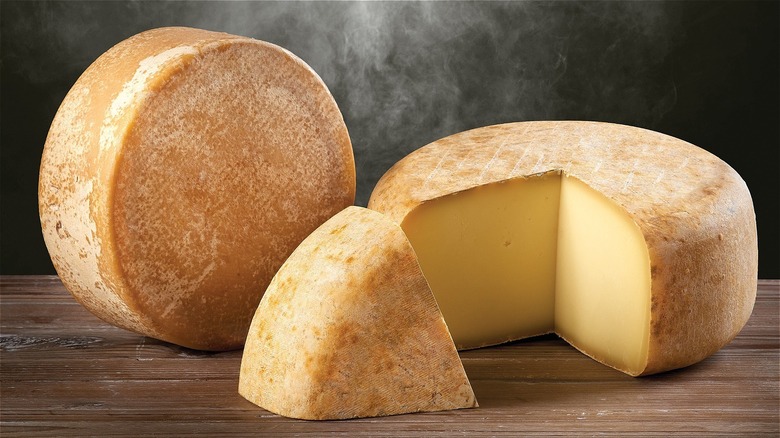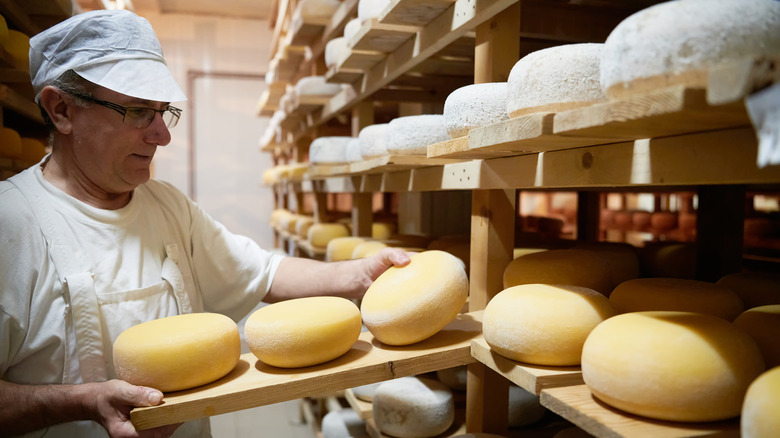The Structure Of A Cheese Wheel Is More Important Than You May Expect
Those of us who buy our cheese sliced and in plastic trays may not know this, but most of the world's cheeses are cut or shaved from wheels. But it likely didn't start out this way, since cheesemaking (8000 B.C., per The Spruce Eats) appears to predate the invention of the wheel (2000 B.C., per CiteCo).
The Spruce Eats says there are signs that cheesemaking began as far back as 8000 B.C., when humans first domesticated sheep. It is likely that sheep stomachs could have been used to transport milk, and the rennet found in these early bags could have triggered the chemical reaction that turned that milk into cheese.
But Culture suggests the foundations for cheesemaking were not laid out until nearly a thousand years later, because scientists discovered milk fat in pockets of pottery that go back a thousand years after that. Still, cheesemaking likely didn't get very far until the age of the Roman empire, which is when people then figured out how to make cheese so it could be transported across greater distances. They used round bronze containers to store milk (which would later become cheese). They also learned to use heat, which allowed the product to keep longer and age more efficiently as a result. In order to deal with the frequent problem of cheeses rotting in the middle and to make them more sturdy, people began mixing cheese curds with salt before pressing them into hoops.
There are several reasons why cheeses come in wheels
The practice of pressing cheeses into wooden hoops continues to this day, and most of the world's cheeses are made in the shape of wheels. Today, that consideration is founded on food science: The wheel shape offers up a consistent, even thickness, and prevents organisms like mold and bacteria from congregating in just one place. Cheeses made into wheels are also better placed to form a rind, which helps protect it from contaminants from insects to bacteria, per Mental Floss.
Delighted Cooking further says having cheeses come in wheels makes it easier to move the bigger, heavier, and more compact blocks from one place to another. After all, not all cheeses sit in one place from start to finish — they may need to be flipped or moved at some point during the aging process, and having them in a wheel makes it easier for cheesemakers to do that. Today I Found Out says cheeses were once made in huge wheels which were then transported to public markets. Customers could then have cheesemongers lop off however much they wanted to buy.
But not all cheeses come in wheels. As Today I Found Out highlights, tradition can play a part in how cheeses are shaped too. This explains why we get cheese logs and pyramids — and these shapes can indicate what a cheese's origins are.

